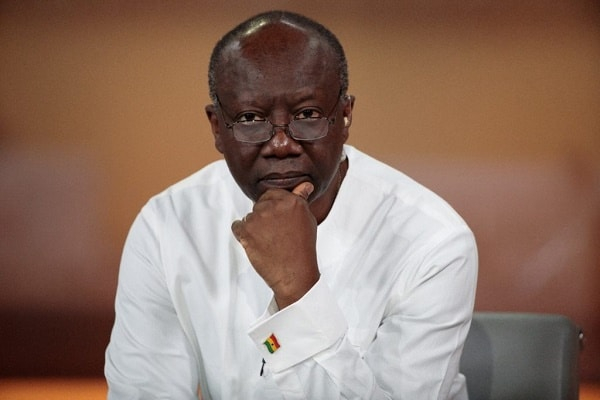 TIMESOFINDIA.COM
TIMESOFINDIA.COMGold prices dropped on Tuesday, June 3, after briefly touching a four-week high earlier in the day. The retreat came as the U.S. dollar rebounded, making the precious metal more expensive for foreign investors. Spot gold slipped by 0.7% to $3,356.75 an ounce by 11:25 GMT, following an earlier jump to its highest level since May 8. U.S. gold futures were also down, easing 0.5% to $3,381.30. According to Ole Hansen, head of commodity strategy at Saxo Bank, the slight uptick in the dollar ahead of key U.S. economic data triggered profit-taking after Monday’s sharp gains. "Today, the dollar trades a tad stronger... these developments are the main reason why we are seeing some light profit following yesterday’s strong gain," Hansen explained.
The main reason gold prices pulled back is the strengthening of the U.S. dollar. Earlier in the session, the dollar index had hit an over-a-month low, but then reversed course and moved higher. A stronger dollar makes gold, which is priced in dollars, less attractive for international buyers.
This dollar rebound came at a time when investors were also locking in profits after Monday’s surge in gold prices, contributing further to the dip. These shifts reflect how sensitive gold is to currency movements and market sentiment, especially during uncertain economic periods. Trade tensions between the United States and China are keeping investors on edge. Market participants are now watching closely for a possible call this week between President Donald Trump and Chinese President Xi Jinping. This comes just days after Trump accused China of violating an agreement to reduce tariffs and trade barriers.

In Europe, the European Commission has pushed back, stating it will urge the U.S. to lower or eliminate tariffs. However, the U.S. is still moving ahead with plans to double steel and aluminum tariffs to 50%. According to a draft letter seen by Reuters, Washington is also pressing countries to submit revised trade offers by Wednesday to speed up negotiations before a five-week deadline. The Organisation for Economic Co-operation and Development (OECD) added to the cautious outlook on Tuesday, stating that the global economy is expected to slow to 2.9% growth in 2025 and 2026. This is a downgrade from its earlier projections of 3.1% in 2025 and 3.0% in 2026. This economic slowdown means investors are paying closer attention to safe-haven assets like gold, although short-term fluctuations—like currency shifts and profit-taking—continue to impact prices. All eyes are now on Friday’s U.S. non-farm payrolls report, a major indicator of economic health. Alongside this, investors are tuning in to speeches from various Federal Reserve officials, seeking clues on the future path of interest rates.
Gold dropped due to a stronger U.S. dollar and investor profit-taking after recent gains.
The main reason gold prices pulled back is the strengthening of the U.S. dollar. Earlier in the session, the dollar index had hit an over-a-month low, but then reversed course and moved higher. A stronger dollar makes gold, which is priced in dollars, less attractive for international buyers.
This dollar rebound came at a time when investors were also locking in profits after Monday’s surge in gold prices, contributing further to the dip. These shifts reflect how sensitive gold is to currency movements and market sentiment, especially during uncertain economic periods. Trade tensions between the United States and China are keeping investors on edge. Market participants are now watching closely for a possible call this week between President Donald Trump and Chinese President Xi Jinping. This comes just days after Trump accused China of violating an agreement to reduce tariffs and trade barriers.

In Europe, the European Commission has pushed back, stating it will urge the U.S. to lower or eliminate tariffs. However, the U.S. is still moving ahead with plans to double steel and aluminum tariffs to 50%. According to a draft letter seen by Reuters, Washington is also pressing countries to submit revised trade offers by Wednesday to speed up negotiations before a five-week deadline. The Organisation for Economic Co-operation and Development (OECD) added to the cautious outlook on Tuesday, stating that the global economy is expected to slow to 2.9% growth in 2025 and 2026. This is a downgrade from its earlier projections of 3.1% in 2025 and 3.0% in 2026. This economic slowdown means investors are paying closer attention to safe-haven assets like gold, although short-term fluctuations—like currency shifts and profit-taking—continue to impact prices. All eyes are now on Friday’s U.S. non-farm payrolls report, a major indicator of economic health. Alongside this, investors are tuning in to speeches from various Federal Reserve officials, seeking clues on the future path of interest rates.
Gold generally performs well in low-interest-rate environments, since it doesn’t yield interest. If the Fed signals that rates may stay lower for longer, this could boost gold demand again.
The dip in gold wasn’t isolated. Other precious metals also felt the pressure: These shifts reflect broader market uncertainty and the influence of both currency and economic trends on precious metals pricing.Gold dropped due to a stronger U.S. dollar and investor profit-taking after recent gains.
How are U.S.-China trade tensions affecting gold prices?
Uncertainty over tariffs and talks between Trump and Xi Jinping is keeping gold prices volatile.
Read More News on
(Catch all the US News, UK News, Canada News, International Breaking News Events, and Latest News Updates on The Economic Times.)
Download The Economic Times News App to get Daily International News Updates.













